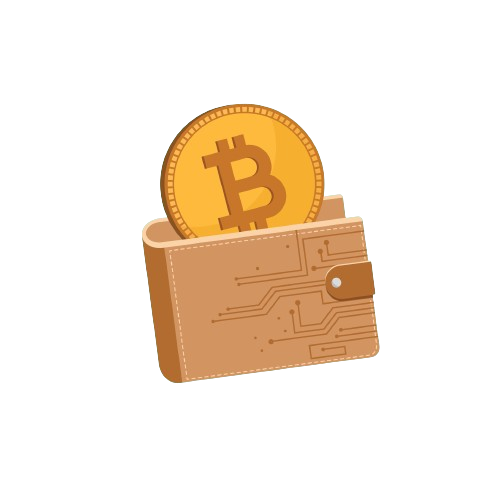
As blockchain technology gains mainstream traction, scaling the networks to achieve greater transaction throughput and speed emerges as a key challenge. Blockchains face fundamental limitations in processing large volumes of transactions due to their decentralized consensus mechanisms. This leads to congestion and higher fees during periods of peak usage. Addressing these scalability constraints is crucial for enabling blockchain adoption across industries.
Sharding has emerged as one of the most promising scaling solutions being implemented by major networks like Ethereum. But what exactly is blockchain sharding and how does it impact performance? This article provides an in-depth look at sharding – the concepts, techniques, benefits and limitations. Understanding sharding is key for grasping the nuances of blockchain scaling and its implications.
Understanding Blockchain Sharding
At its core, sharding refers to partitioning a database horizontally to spread the computational and storage workload across multiple smaller databases. In blockchain, sharding means dividing the network into several shards, with each shard constituting its independent blockchain.
Shard chains process and validate a subset of all transactions, enabling parallel processing. The key aim is to significantly bolster the throughput – number of transactions per second (TPS) – that a blockchain can handle by parallelizing operations across shards.
Beyond throughput, sharding provides other benefits like better network participation by reducing hardware requirements for nodes. However, sharding also introduces complexities around data availability across shards and securing the overall network. Implementing sharding successfully necessitates addressing decentralization, security and latency tradeoffs.
How Sharding Works
Sharding a blockchain involves three key steps:

Network Segmentation – The first step is determining how to segment the existing blockchain into separate shards. This includes deciding on the number of shards and the subset of accounts that will reside on each shard.
Transaction Routing – With the network segmented, a routing mechanism is needed to distribute incoming transactions to the appropriate shard for processing based on the sending and receiving account addresses.
Cross-Shard Communication – As shards cannot communicate directly, protocols are required to transmit messages between shards when transactions need to be executed across shards.
A variety of sharding architectures and methodologies have been proposed by projects like Ethereum, Zilliqa and Harmony taking different approaches to segmentation and routing. But fundamentally, sharding hinges on parallelizing transaction execution across shards while still preserving security and decentralization.
Sharding Techniques and Methods
Some key techniques and design choices underpin sharding architectures:
Proof-of-stake consensus – PoS protocols like Ouroboros and Snow White enable energy efficiency and randomness generation required for shard formation and organization.
State sharding – Sharding the blockchain state enables processing transactions in parallel. State refers to account balances and smart contract data.
Network sharding – Sharding the validator network boosts decentralization by allowing more validator nodes across shards.
Cross-links – Cross-shard references that act like receipts enabling communication between shards for transactions involving multiple shards.
Random sampling – Statistical sampling techniques securely assign accounts to shards in a randomized manner increasing unpredictability.
Atomic commits – Coordinated approval across shards to finalize cross-shard transactions together atomically.
Merkle trees – A data structure that provides data availability and integrity assurances across shards.
The combination of methods and techniques determines the performance, security and decentralization tradeoffs for a sharded blockchain.
Benefits of Blockchain Sharding
Implementing sharding can significantly enhance blockchain performance and scalability:

Higher throughput – Parallel execution increases transactions per second handling capabilities.
Faster confirmation times – Spreading transaction volume across shards enables faster validation.
Increased decentralization – More nodes can participate by handling smaller shards as hardware requirements reduce.
Higher resilience – Isolating transactions and states provides segmentation between shards limiting contagion.
Improved storage efficiency – Sharding reduces data storage and management loads for individual nodes.
For blockchain networks facing congestion and high fees like Ethereum, sharding offers a way to maintain decentralization while meeting demands at scale. The multi-fold increase in throughput unlocks new high-volume use cases.
Limitations and Risks
However, sharding also comes with certain limitations and risks to consider:
Cross-shard latency – Cross-shard communication and atomic commits add latency overheads impacting performance.
Additional complexity – Significant software changes are required. The architecture, tooling and APIs grow more complex.
Validator overload – Validators may need to process multiple shards heightening bandwidth and uptime requirements.
Reorganization risks – Attempted double-spends across shards could lead to transaction reversals and confirmations being invalidated.
Security threats – The expanded attack surface increases vulnerabilities like cross-shard takeovers, SQL injection and DDoS amplification attacks.
Centralization risks – Fewer validation nodes may emerge per shard compared to processing the entire blockchain.
While sharding is powerful, production implementations require multi-year development and testing to address these constraints and risks.
Case Study: Ethereum’s Vision for Sharding

Ethereum is one of the most eagerly awaited sharding implementations expected to launch between 2023-2024. Here are some key aspects of Ethereum’s sharding approach:
Leverages proof-of-stake consensus established via the Beacon chain and Casper protocol.
Plans to introduce 1024 shards using an automated and pseudorandom assignment of accounts to shards.
Proposes a Zigzag sampling algorithm as a verifiable random function for shard formation and committee election.
Implements cross-links to enable communication between shards while retaining data availability assurances.
Plans to mitigate risks like state redundancy and fork choice rules through proposals like stateless clients, collation and proposer-builder separation.
Introduces various new entities like the Beacon chain, proposers, attesters, collators and block builders to enable distributed shard coordination.
While Ethereum’s sharding design is still evolving, it offers a model for how sharding may be adapted to a proof-of-stake-based Layer 1 blockchain. However, the sheer complexity means rigorous testing and incremental deployment is critical.
Conclusion
Sharding represents a vital scaling technique that could expand the possibilities of blockchain technology through significant throughput improvements. Partitioning the network enables parallelized transaction processing across shards, overcoming current performance bottlenecks.
However, shards also introduce risks around security vulnerabilities, centralization, cross-shard coordination and architecture complexity. Striking the right decentralization tradeoffs and incentivizing sufficient shard validators will be key. There are still many open research questions around optimal sharding mechanisms and methodologies.
Nevertheless, sharding on networks like Ethereum, Zilliqa and Harmony highlights the promise. As blockchain adoption grows, sharding could enable on-chain capacity to keep pace with usage growth. However prudent testing and iterative progress will be crucial. For users, advancements like sharding that successfully preserves the core premises of decentralization and security could pave the way for blockchain scaling sustainably.